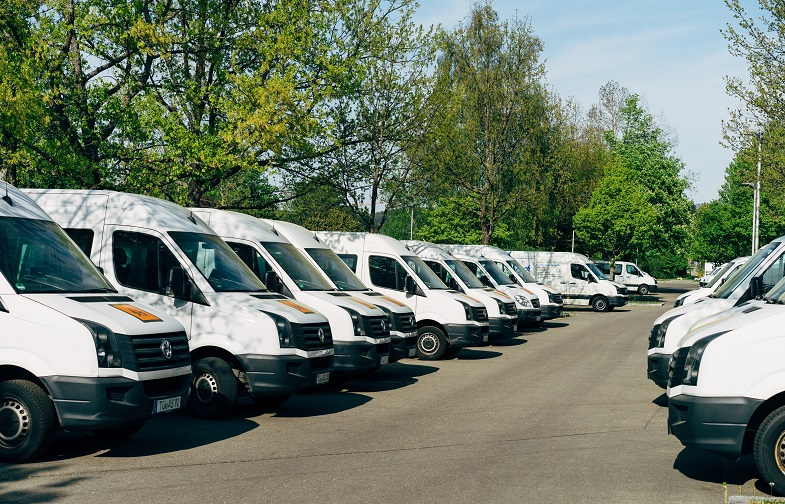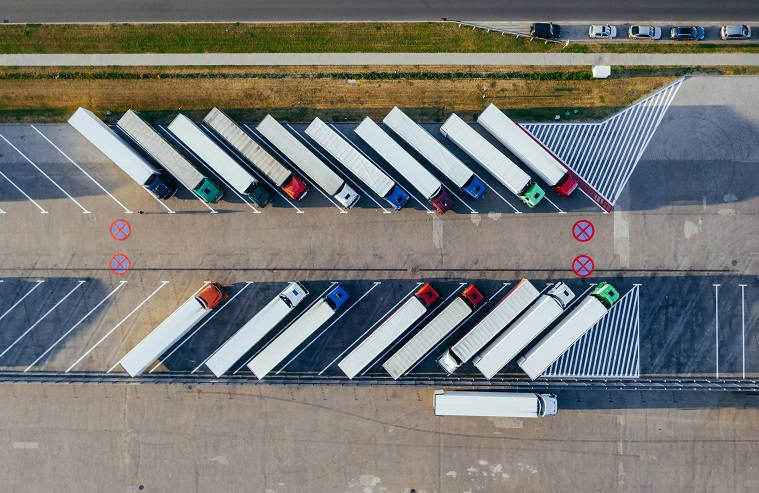Running a fleet can be stressful, and it can be chaotic and if you are not careful costs can end up getting away from you. If you are not in control of your fleet costs, then how can you expect to manage and run an effective business? To control costs and be on top of what you are spending on keeping your fleet on the road, you need to be as efficient as possible.
Top 6 Fleet Management Tips To Improve Efficiency
Knowing you need to be efficient is one thing, but where do you start, and what actions can you take to improve efficiency?

1. Regular Truck And Vehicle Maintenance
When trucks and vehicles are regularly maintained and monitored, then problems can be spotted earlier and rectified a lot sooner. Regular maintenance can also keep trucks and other company vehicles running as smoothly as possible for as long as possible.
If trucks and vehicles are maintained monthly, then everything from the engine to damage can be managed and monitored where necessary. When you focus on preventative measures for your fleet, you can ensure that you do not end up with severe problems or issues later down the line.
2. Route Planning
Going on unnecessarily long routes or going here, there, and everywhere instead of from A to B to C will cost your fleet more money. Unnecessary or out-of-the-way journeys all add up. A few kilometers here and there may not make a difference every so often, but if you look at the bigger picture, and you look at these journeys over the years they soon add up, and ultimately they affect your bottom line and your costs.
Where you can, you should look at planning out your routes to ensure that they are as economical and efficient as possible. Pre-planning routes will not only save kilometers, but it will save time and money, which is good news all around.
3. Dash Cams
If you want to know where to make improvements to your efficiency levels, then you need to know where to start. Relying on driving input and data can prove to be inaccurate, especially if you have those drivers that do not want to share all of the details of their journey with you.
When you start using these dash cams, you can see easily and quickly where journey times can be altered, and where better routes can be implemented to increase efficiency. Without using reliable technology you will be relying on what your drivers share with you and this might not always be 100% accurate.

4. Automated Processes
Manual processes can and will slow you down. When your business is running at a snail’s pace then ultimately your efficiency and output will be affected. Automated processes should be seen as something that you embrace within all areas of your business, especially fleet management.
Relying on processes to tell you where and what needs fixing, looking at, or improving is the way forward and if you are not embracing automation and automated processes then ultimately your business will become stagnant, and your competition will steam ahead of you, leaving you behind in a trail of dust.
5. Cut Down Fuel Costs
The amount your fleet spends on fuel is no doubt eye-wateringly high, and to improve the efficiency of your fleet you need to cut down on the amount of fuel your vehicles and trucks consume. Cutting down fuel costs on each journey can also be achieved by planning out routes so that they are the shortest possible, even though they might not be the quickest.
To make this happen you need to monitor how many kilometers you are getting to the gallon, you also need to keep fuel lines and filters within the vehicles clean, maintained, and in a good state of repair.
6. Keep An Eye On Those Tires
Old worn tires, thinning and balding tires, and old tires all cost more to keep than just to replace. Older tires that are not fit for purpose will make the vehicle they are on sluggish, slow, and heavy. When vehicles are heavy and sluggish to use, they are not at their most efficient.
Monitoring tire wear and tear and regularly checking tire pressures before journeys will help you see which tires are performing well and which ones are letting the whole truck down. It only takes one tire to affect a vehicle’s performance, so be sure to check all tires regularly.
Improving efficiency will no doubt benefit your business’s bottom line, but a more efficient fleet can also help boost your eco credentials and reputation too, which is something that should not be ignored.



















